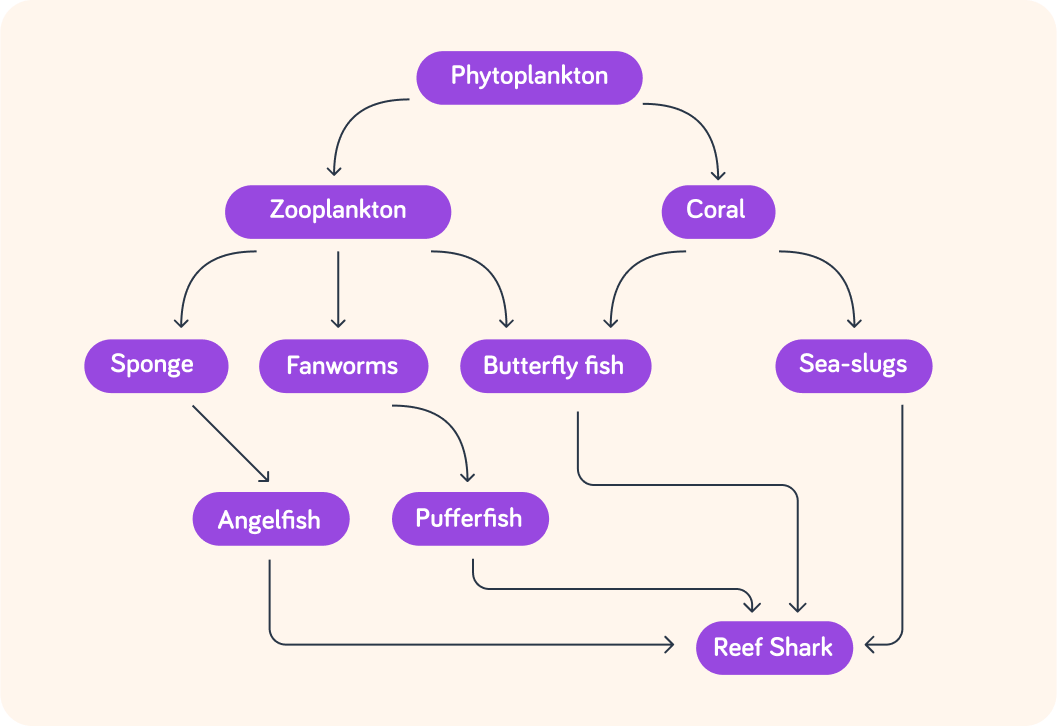YOU ARE LEARNING:
Changing Communities: Biotic

Changing Communities: Biotic
The function of organisms in a community is affected by many factors. Factors can be classified into biotic and abiotic factors. This lesson will look at how biotic factors can influence organism function.
In an ecosystem a community consists of...

Pick the correct definition of biotic factors in an ecosystem.

When the interactions between organisms in a community change, it can affect those organisms, both if the interactions that change are between different species or between individuals of the same species.
Biotic factor: Availability of food
Grass→rabbits→foxes
In a simple food chain, the number of foxes in this population will partly depend on the number of rabbits, and the number of rabbits will partly depend on the amount of grass in the ecosystem.
Why can an ecosystem in sunny southern Europe support more foxes than a similarly sized ecosystem in parts of Europe above the Arctic Circle?

Real ecosystems do not normally contain a single simple food chain.
Usually, they are made up of several linked chains. We can show these feeding relationships as a food web. This is an example of a marine food web.

Looking at this marine food web, what could be the effect of a decline in the population size of the zooplankton on the population of the sea slugs?
A) No change, because sea slugs don't eat zooplankton. B) It declines, because the butterfly fish eat more coral.


So the population of sea slugs can be affected because the eating habits of butterfly fish change!
When there is less zooplankton, butterfly fish will eat more coral. That means that the sea slugs, who also eat coral, will have less food, and their numbers will decline.

Predators
A stable ecosystem, such as this coral reef, can be changed by the arrival of a new predator species.

In this ecosystem, which species is the apex carnivore?


Hammerhead sharks eat anglefish and puffer-fish. Hammerhead sharks are nomadic (they move around between different parts of a reef). What would happen to the population of reef sharks if a group of hammerhead sharks started feeding in their territory?
A) No change B) Increase in number C) Decrease in number


When feeding relationships change, either due to a new predator or a change in the availability of prey, the predator population can decline in three main ways.
Starvation
Lack of food so individuals die.
Migration
Individuals move to a new area with more food.
Lower birth rates
Fewer births to replace those that die.
In extreme cases of competition for food, the population of one species might decline so much that there are too few to sustain regular breeding. In this situation what could happen to this population?

Myxomatosis is a viral infection that attacks rabbits and is normally fatal. What is the correct term for a micro-organism that attacks another organism and causes illness (morbidity) and sometimes death (mortality)?

Grass→Rabbits→→FoxesBuzzards What would happen to each of the populations in this food chain if the pathogen m****yxomatosis were introduced into this ecosystem?
What would happen to the foxes and the buzzards?

What would happen to the rabbits?

What would happen to the grass?

